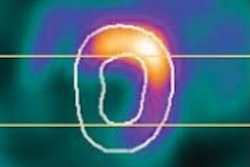
Cardiac imaging in Australia has seen hefty growth over the past decade, but that growth has been uneven and unconnected to disease burden, said researchers presenting at last week's European Society of Cardiology (ESC) 2015 meeting in London.
A group from the University of Tasmania in Hobart looked at 12 years of outpatient cardiac imaging, including transthoracic echocardiography (TTE), transesophageal echocardiography (TEE), stress echocardiography (SE), and SPECT. The number of procedures varied widely, but procedure volumes correlated with the number of practitioners in each region rather than the incidence of heart disease.
"Variation in cardiac imaging in Australia is not illness-related, and may be evidence of under- or overutilization," wrote Ricardo Fonseca, Petr Otahal, Nadine Wiggins, and Thomas Marwick in an ESC poster presentation.
Heart disease, or too many providers?
In their study, the team from the university's Menzies Institute of Medical Research hypothesized that overall growth in the use of echocardiography is driven by access to the technology rather than disease burden.
The study aimed to determine regional variations in cardiac imaging use and examine the causes of the variations.
Their analyses were based on the use of TTE, TEE, SE, and SPECT from 2002 to 2013, per Medicare Australia workforce and census data. They used Spearman rank correlations to compare univariate associations between age-weighted test per 100,000 individuals. Statistical analyses used binomial regression and zero-inflated negative binomial regression. For 2012, the group analyzed relationships between the use of each cardiac imaging technique and demographic, medical, and illness factors in outpatient tests reimbursed that year.
Fast, uneven growth
Overall, reimbursements for TTE per 100,000 people rose 8.8% annually (from 1,780 to 3,497). TOE rates rose from 33 to 61 per 100,000 people over 11 years, and SPECT from 287 to 337. SE showed the fastest growth rate at 36.5% per year.
Independent of regional cardiovascular disease burden and social determinants, "the number of medical practitioners per 1,000 people" was the main correlate of both TTE (p < 0.01) and TOE (p < 0.01), use per capita, the group reported.
For SPECT, female sex (p < 0.01) and greater degrees of socioeconomic disadvantage (p = 0.04) were the main correlates of getting a test, the authors wrote.
| Substantial regional variation in the use of cardiac imaging modalities | |||
| Procedure | Rate per 100,000 people | Highest rate | Lowest rate |
| TTE | 3,106 | 7,184 | 382.8 |
| TEE | 67.1 | 242 | 5 |
| SE | 1,010 | 2,991.5 | 311 |
| SPECT | 337.3 | 955.8 | 105.8 |
The results "present evidence of growth and regional variation that are not fully accounted for by variations and demographic disease burden," Fonseca and colleagues wrote. "The international profile of geographic variation in imaging use is surprisingly consistent, implying regional variations in practice style and/or access to imaging."
Because the regional variations lack any association to disease burden or mortality, a reduction in the extreme variations would likely save money without causing harm, the group wrote. Moreover, utilization of appropriate-use criteria is likely to reduce the variation.



















